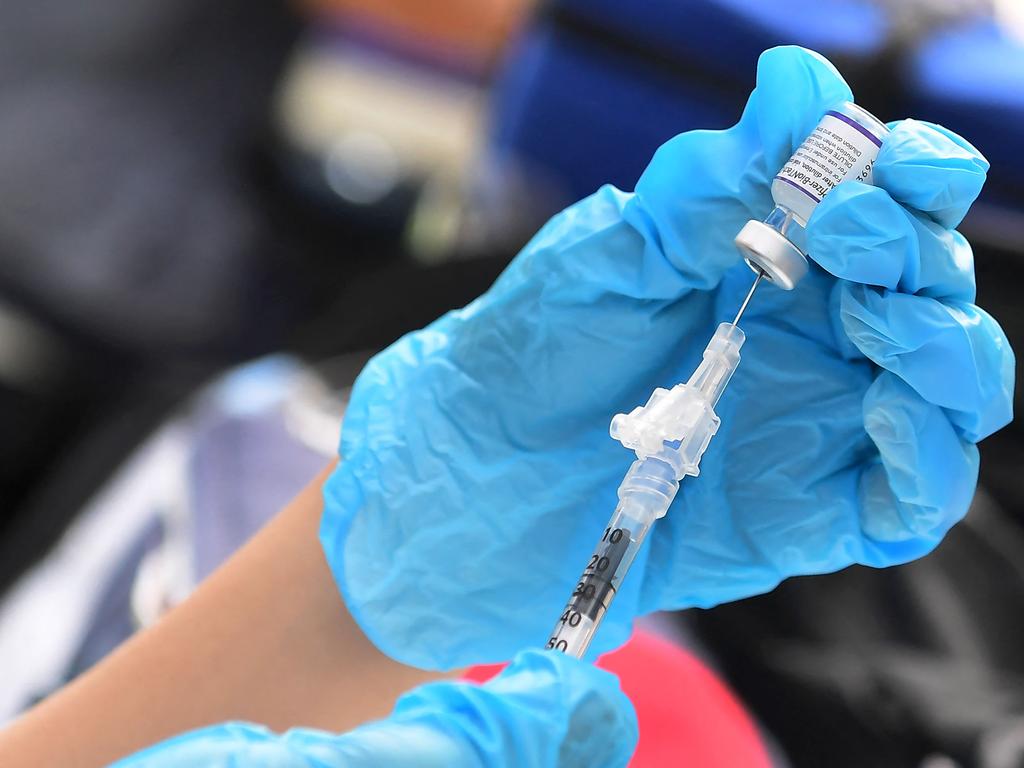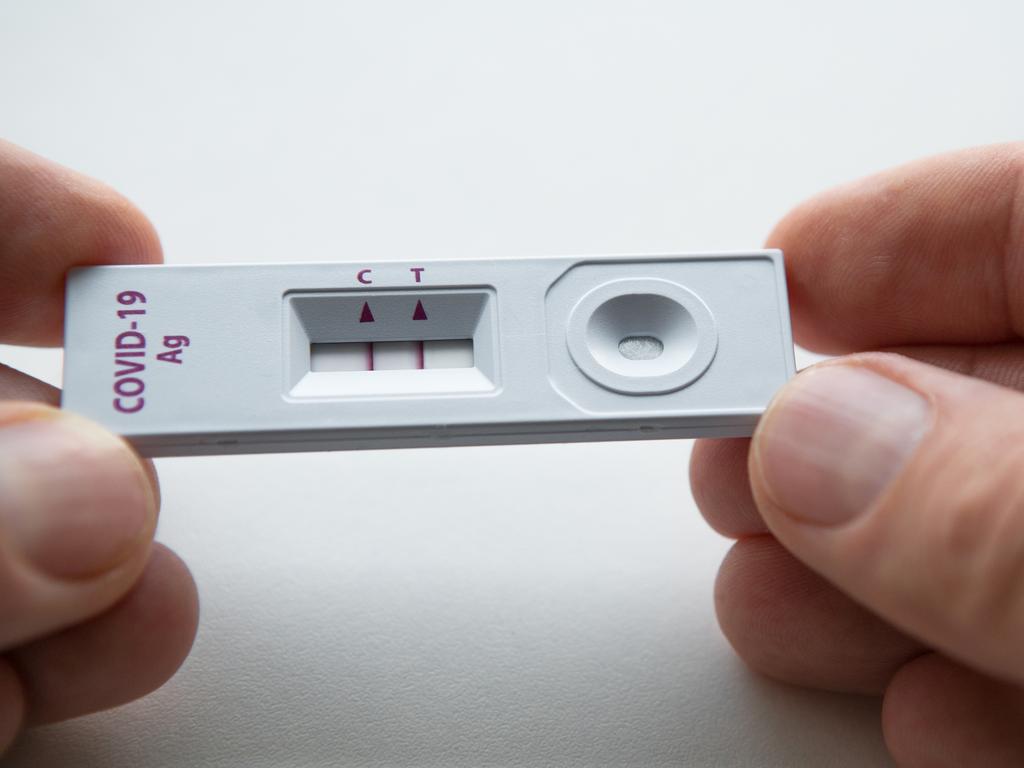Biggest Covid strains spreading in Australia and overseas
Covid-19 is no longer a global emergency, however variants are mutating and circulating overseas and in Australia. Here’s what you need to know about the top five bugs out there.
As Australia sees a spike in coronavirus cases, experts are worried about variants reaching peak transmission during the Christmas period.
Several new variants of Covid-19 are mutating and spreading around the world. All of the most prevalent strains in the US are offshoots of omicron, which first emerged in November 2021, and this lineage enables health officials to roll out updated vaccines and boosters.
But while total cases across the globe, hospitalisations, and deaths have been trending downward, some of the new variants afre picking up speed and authorities are monitoring their mutations.

Here are the things you need to know about the variants, how they are transmitted, their symptoms, treatments and more.
HV.1
A new highly contagious Covid-19 variant, HV.1, is now the dominant strain in the US and is sweeping the country, most concerningly during the Northern winter’s cold and flu season.
HV.1 is a new omicron subvariant and has quickly overtaken other strains, including EG.5 aka Eris, to become the dominant variant in the US.
By early November, HV.1 was responsible for more than a quarter of all coronavirus cases, according to data from the U.S. Centers for Disease Control and Prevention (CDC).
HV.1 is a sublineage of omicron XBB.1.9.2 and a direct descendant of EG.5, according to the CDC’s SARS-CoV-2 lineage tree.
In late July, HV.1 accounted for just 0.5% of Covid-19 cases in the US. CDC data show. By November, it was the dominant strain.
IS HV.1 MORE TRANSMISSIBLE?
It appears that HV.1 is more effective at spreading from person to person than previous strains.
HV.1 could also be slightly better at dodging prior immunity to Covid-19, which might explain why some people are getting the virus multiple times despite having previous infections or getting their bossters.
But although it is more transmissible, HV.1 does not appear to produce more severe disease or lead to more hospitalisation.
WHAT ARE HV.1 SYMPTOMS?
The symptoms are comparable to those caused by recent omicron variant and include:
Sore throat
Dry cough
Congestion
Runny nose
Headache
Fatigue Muscle aches
Fever or chills
This coronavirus appears in the upper respiratory tract, starting with a sore throat and can produce a lingering cough similar to that of chronic bronchitis.
IS HV.1 DETECTABLE BY COVID TEST?
Yes. All Covid-19 tests including PCR tests and rapid antigen tests detect HV.1.
It’s important to test if you have symptoms to distinguish between flu, RSV, rhinovirus or common cold, and Covid as the symptoms are similar.
WHAT IS THE TREATMENT FOR HV.1?
Covid-19 antivirals such as Paxlovid are effective against HV.1 and other variants, but are recommended in the first few days of symptoms appearing.

DO THE NEW VACCINES PROTECT AGAINST HV.1?
The updated Covid-19 vaccine and boosters have been reformulated to target omicron XBB.1.5, which was the dominant variant for most of 2023.
While XBB.1.5 has been eclipsed by HV.1, Eris, Fornax and Arcturus, the newer strains are descendants and the updated vaccines work on them.
CAN I PREVENT CATCHING HV.1?
Choose to gather outdoors and wear a mask in crowded indoor spaces.
Don’t meet with people who report cold and flu-like symptoms.
Wash your hands and sanitise them.
Stay up to date with your vaccinations.
Get tested if you have symptoms and stay isolated if you do test positive.
EG.5 OR ‘ERIS’
Until recently, EG.5 or ‘Eris,’was the dominant Covid-19 variant in the US and worldwide.
First detected in February 2023, EG.5 is a descendant of the omicron XBB.1.9.2, with an extra mutation in its spike protein, according to a WHO risk evaluation report.
A fast-spreading subvariant, it accounted for the largest proportion of Covid-19 infections in 2023, until HV.1 took over in October.
According to the CDC, EG.5 made up an estimated 23.6% of new Covid cases during a two-week period ending on October 14.
EG.5 is still spreading and infecting people worldwide and has been reported in 73 countries and continues to increase in prevalence globally. The majority of sequences are from the US, China, Japan, and South Korea.
IS EG.5 MORE TRANSMISSIBLE?
The EG.5 variant is very similar to earlier omicron variants, which means it’s also highly transmissible, possibly more so than other XBB variants, which is why its numbers increased so rapidly.
According to the WHO, EG.5 has more immune escape properties compared to other variants. “EG.5 may cause a rise in case incidence and become dominant in some countries or even globally,” WHO said in a report.
WHAT ARE EG.5 SYMPTOMS?
So far, the symptoms of EG.5 look very similar to the standard omicron symptoms and include:
Cough
Sore throat
Runny nose
Sneezing
Fatigue
Headache
Muscle aches
Altered sense of smell
IS EG.5 DETECTABLE BY COVID TEST?
Yes. All Covid-19 tests including PCR tests and rapid antigen tests detect EG.5.
It’s important to test if you have symptoms to distinguish between flu, RSV, rhinovirus or common cold, and Covid as the symptoms are similar.
WHAT IS THE TREATMENT FOR EG.5?
Covid-19 antivirals such as Paxlovid are effective against omicron and its variants, but are recommended in the first few days of symptoms appearing.
DO THE NEW VACCINES PROTECT AGAINST EG.5?
Population immunity from vaccination and prior infection should protect people from severe illness as EG.5 continues to circulate.
The updated Covid-19 vaccine and boosters have been reformulated to target omicron and its close relatives HV.1, Eris, Fornax and Arcturus.
CAN I PREVENT CATCHING EG.5?
Choose to gather outdoors and wear a mask in crowded indoor spaces.
Don’t meet with people who report cold and flu-like symptoms.
Wash your hands and sanitise them.
Stay up to date with your vaccinations.
Get tested if you have symptoms and stay isolated if you do test positive.
XBB.1.16 OR ‘ARCTURUS’
Earlier in 2023, experts warned the Arcturus variant was causing the uptick in Covid-19 cases in the US. That omicron subvariant, officially named XBB.1.16, was first detected in January and became prevalent in India. By early May it accounted for more than 12.5% of new confirmed Covid-19 cases in the US according to the CDC just as the World Health Organisation declared that Covid-19 was no longer a global health emergency.
XBB.1.16 is a hybrid of two BA.2 sublineages, according to the WHO. It became a variant of interest because it was circulating widely and had mutations that could evade immunity. Its severity is in line with other omicron variants.
IS ARCTURUS MORE TRANSMISSIBLE?
XBB.1.16 seems to have a mutation that could make it even more transmissible than some of the other omicron strains. It has at least two mutations in the spike proteins that enable it to evade immunity from infection or vaccine.
WHAT ARE ARCTURUS SYMPTOMS?
XBB.1.16 Arcturus symptoms are slightly different to other omicron variants, and Today.com reports the increased likelihood of fever, conjunctivitus or ‘pink eye,’ which is redness, swelling and discharge around the eye or eyelid. The main symptoms include:
Sore throat
Runny nose
Sneezing
Cough
Headache
Fatigue
Muscle aches
Altered sense of smell

IS ARCTURUS DETECTABLE BY COVID TEST?
Yes. All Covid-19 tests including PCR tests and rapid antigen tests detect the omicron variants.
It’s important to test if you have symptoms to distinguish between flu, RSV, rhinovirus or common cold, and Covid as the symptoms are similar.
WHAT IS THE TREATMENT FOR ARCTURUS?
Covid-19 antivirals such as Paxlovid are effective against omicron and its variants, but are recommended in the first few days of symptoms appearing.
DO THE NEW VACCINES PROTECT AGAINST ARCTURUS?
The updated Covid-19 vaccine and boosters have been reformulated to target omicron and its close relatives HV.1, Eris, Fornax and Arcturus.
CAN I PREVENT CATCHING ARCTURUS?
Choose to gather outdoors and wear a mask in crowded indoor spaces.
Don’t meet with people who report cold and flu-like symptoms.
Wash your hands and sanitise them.
Stay up to date with your vaccinations.
Get tested if you have symptoms and stay isolated if you do test positive.
FL.1.5.1 OR ‘FORNAX’
After EG.5, or Eris, the next most common strain is another descendant of omicron XBB, FL.1.5.1 or ‘Fornax.’ FL.1.5.1 is the next-largest strain in the US accounting for 13.3% of infections at the end of August 2023, according to the CDC.
A variant to be monitored, Fornax cases nearly doubled within one week, attributable to the mutation that helps it evade immunity.
IS FL.1.5.1 OR FORNAX MORE TRANSMISSIBLE?
FL.1.5.1 as well as EG.5 are XBB variant descendants that share a mutation known as F456L, CBS news reported.
This mutation appears to be helping the variant spread more than other virus siblings.
WHAT ARE THE FORNAX SYMPTOMS?
Common symptoms include:
Cough
Sore throat
Runny nose
Sneezing
Fatigue
Headache
Muscle aches
Altered sense of smell
IS FORNAX DETECTABLE BY COVID TEST?
Yes. All Covid-19 tests including PCR tests and rapid antigen tests detect the omicron variants.
It’s important to test if you have symptoms to distinguish between flu, RSV, rhinovirus or common cold, and Covid as the symptoms are similar.
WHAT IS THE TREATMENT FOR FORNAX?
Covid-19 antivirals such as Paxlovid are effective against omicron and its variants, but are recommended in the first few days of symptoms appearing.
DO THE NEW VACCINES PROTECT AGAINST FORNAX?
The new vaccines and booster shots offer cross-protection against sub-strains descended from omicron.

CAN I PREVENT CATCHING FORNAX?
Choose to gather outdoors and wear a mask in crowded indoor spaces.
Don’t meet with people who report cold and flu-like symptoms.
Wash your hands and sanitise them.
Stay up to date with your vaccinations.
Get tested if you have symptoms and stay isolated if you do test positive.
BA.2.86 OR ‘PIROLA’
BA.2.86 is an extremely mutated omicron variant and has an extra 36 mutations that differentiate it from XBB.1.5.
BA.2.86, nicknamed ‘Pirola’ was detected in humans and wastewater samples in the US and several other countries in the middle of 2023.
It was first detected in late July in Israel and Denmark and appears to have descended from the omicron BA.2 sublineage, which caused surges in early 2022.
The countries reporting the highest number of cases are the UK, France, Sweden, Spain, Canada, the US, and Denmark. Health authorities have been closely monitoring BA.2.86, which is responsible for a few thousand cases across 38 countries.
According to the CDC, BA.2.86 is a variant of note because of its genetic mutability and rapid circulation in little time.
IS BA.2.86 MORE TRANSMISSIBLE?
CDC said BA.2.86 may be more capable of evading existing immunity from vaccines or prior infection.
In report published on October 27., the CDC said more “real-world human outcome data” are needed to better understand the impacts of pre-existing immunity for BA.2.86.
Pirola is circulating at low levels in the US, and is not the main driver of new cases.
WHAT ARE THE PIROLA SYMPTOMS?
Common symptoms include:
Cough
Sore throat
Runny nose
Sneezing
Fatigue
Headache
Muscle aches
Altered sense of smell
IS PIROLA DETECTABLE BY COVID TEST?
Yes. All Covid-19 tests including PCR tests and rapid antigen tests detect the omicron variants.
It’s important to test if you have symptoms to distinguish between flu, RSV, rhinovirus or common cold, and Covid as the symptoms are similar.
WHAT IS THE TREATMENT FOR PIROLA?
Covid-19 antivirals such as Paxlovid are effective against omicron and its variants, but are recommended in the first few days of symptoms appearing.

DO THE NEW VACCINES PROTECT AGAINST PIROLA?
Concerns about Pirola’s ability to cause breakthrough infections have resurfaced, with vaccine makers Moderna and Pfizer reformulating their Covid shots to generate a strong immune response to BA.2.86.
The new vaccines will offer cross-protection against sub-strains circulating in the last months of the year.
CAN I PREVENT CATCHING PIROLA?
Choose to gather outdoors and wear a mask in crowded indoor spaces.
Don’t meet with people who report cold and flu-like symptoms.
Wash your hands and sanitise them.
Stay up to date with your vaccinations.
Get tested if you have symptoms and stay isolated if you do test positive.





